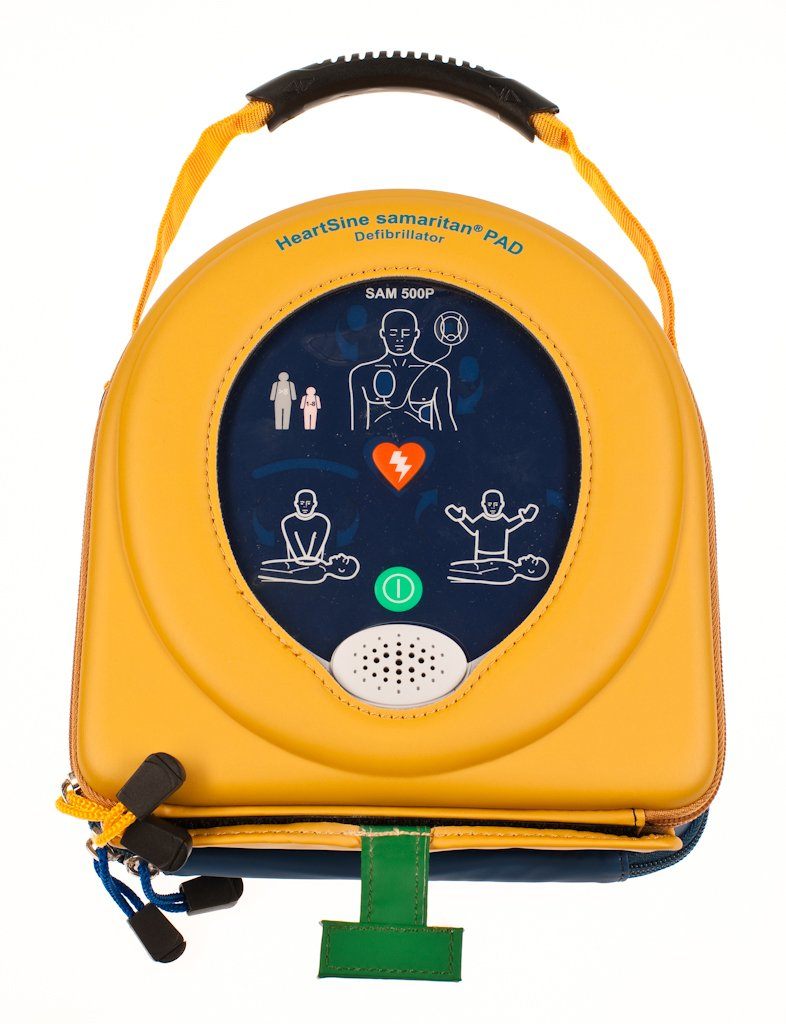5 Factors to Consider When Choosing a Defibrillator for Your Workplace
Having a defibrillator in your workplace can be a lifesaving investment. In the event of a sudden cardiac arrest, a defibrillator can significantly increase the chances of survival. However, with various options available, it's essential to make an informed decision when choosing the right defibrillator for your workplace.
In this blog post, we will discuss some key factors to consider when selecting a defibrillator that best suits your workplace needs.
Ease of Use
When an emergency strikes, every second counts. Therefore, it's crucial to choose a defibrillator like Heartsine defibrillator pads that is easy to use, even for individuals without medical training. Look for models with clear instructions and visual prompts that guide users through the resuscitation process. Some defibrillators feature voice instructions that offer step-by-step guidance, ensuring anyone can confidently operate the device.
The ease of use also extends to the maintenance of the defibrillator. Look for models that require minimal upkeep and have self-diagnostic features to ensure the device is always in optimal condition. Regular maintenance is essential to guarantee the defibrillator is ready to be used at a moment's notice.
Portability and Accessibility
In an emergency, quick access to a defibrillator is crucial. Consider the portability of the device and whether it can be easily carried to the site of the emergency. Look for lightweight and compact models that can be stored in a central location for easy access. Wall-mounted defibrillators with visible signage can also enhance accessibility and ensure that employees can locate the device quickly when needed.
If your workplace has multiple floors or large premises, it may be beneficial to have multiple defibrillators strategically placed for maximum coverage. This ensures that a defibrillator is always within reach, reducing response time during a medical emergency.

Battery Life and Maintenance
A reliable defibrillator such as a Heartsine defibrillator should have a sufficient battery life to ensure readiness in case of an emergency. Look for models that have long-lasting batteries or offer backup power options. This is particularly important if your workplace operates in remote areas or during power outages. The defibrillator should also have indicators that alert the user when the battery needs replacing or recharging.
Regular maintenance and monitoring are also essential to ensure the device is in optimal condition. Some defibrillators come with self-monitoring capabilities that perform regular checks and alerts when maintenance is required. Consider the ease of maintenance and whether the manufacturer provides support and replacement parts when needed.
Training and Support
Proper training is key to utilizing a defibrillator effectively. Consider whether the defibrillator you choose comes with comprehensive training resources or if training can be provided by the manufacturer or a third-party organization. Providing employees with the knowledge and skills to confidently use the defibrillator can save precious minutes during an emergency.
Training should cover not only the operation of the defibrillator but also basic life support techniques. It's essential that employees are aware of the signs of sudden cardiac arrest and know when to use the defibrillator.
Additionally, look for a defibrillator that offers ongoing support, including access to customer service and technical assistance. This ensures that any questions or issues can be resolved promptly to maintain the readiness of the device.
Integration with Emergency Response Systems
To enhance the effectiveness of your workplace's emergency response protocol, consider how the chosen defibrillator integrates with existing systems. Some defibrillators like the Heartsine defibrillator can communicate with emergency medical services, providing real-time data on the patient's condition and allowing medical professionals to prepare in advance. Integration with an emergency response system can lead to rapid assistance and coordination during critical moments.
Furthermore, some defibrillators have connectivity features that allow for the transfer of data to external systems for analysis. This data can provide valuable insights into the effectiveness of your workplace's emergency response and help identify areas of improvement.
Conclusion
When choosing a defibrillator for your workplace, consider the ease of use, portability, battery life, training and support, and integration with emergency response systems. By carefully assessing these factors, you can ensure that your workplace is equipped with a defibrillator that is not only reliable but also user-friendly and capable of saving lives. Remember, early defibrillation is vital in increasing survival rates during sudden cardiac arrests.
So, whether you work in an office, factory, or any other workplace, don't overlook the importance of having a defibrillator within reach. Investing in this life-saving device can make a significant difference in an emergency situation.

Comments
Post a Comment